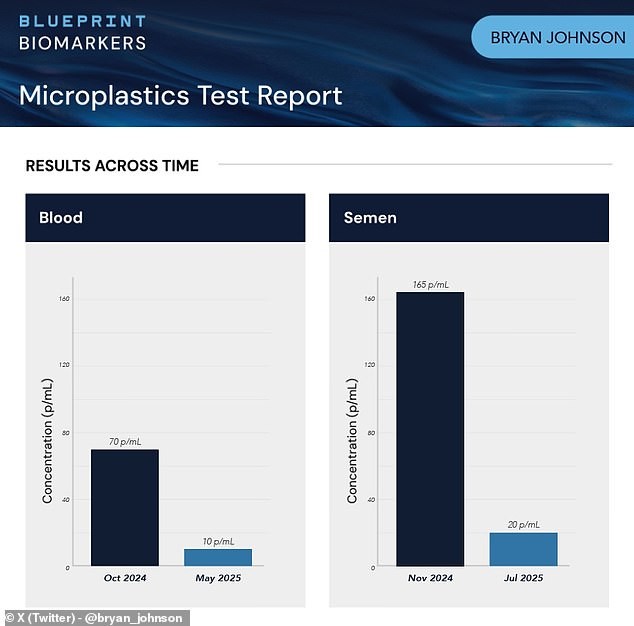A decade reversed, a body detoxed: Bryan Johnson claims 85% of microplastics were removed in under a year
Biohacker Bryan Johnson, 48, says he is biologically younger by more than a decade. He reports dramatic reductions in microplastics: semen microplastics fell from 165 particles per milliliter to 20—an 88% drop—and blood microplastics declined from 70 particles/mL to 10—an 85% drop—between late 2024 and mid-2025. Johnson notes that virtually all humans have microplastics circulating in their bodies, and studies estimate the average person ingests about 50,000 microplastic particles per year. Microplastics can accumulate in the brain, heart, and other vital organs, potentially driving inflammation, infertility, and even some forms of cancer. This case occupies a space between extraordinary claim and ongoing science: it highlights how ubiquitous microplastics are and why some people are chasing aggressive strategies to reduce exposure.

In This Article:
What Johnson says he did to achieve the reduction
Johnson credits a daily routine that combines sauna, plastics avoidance, and high-tech filtration. He says he saunas for 20 minutes at 200°F (93°C) each day and then applies ice to his testicles. He also stopped using plastic microwavable containers and plastic cutting boards, and he uses a reverse osmosis water system. Some of these devices cost upwards of $600, and the evidence for their effectiveness against microplastics remains limited. Johnson tweeted, “To our knowledge, this is the first report of any correlation (esp in the same person over two timepoints) between blood and semen microplastic levels, demonstrating successful microplastic detoxification in the semen following that in the blood. My results offer a new sense of hope for the detoxification of microplastics from the testis and semen, especially after the concerns raised by a study last year.”

The science and the skepticism around microplastics and fertility
A study published last May in Toxicological Sciences examined microplastic levels in 23 testes from deceased men, as well as testicular tissue from deceased dogs. All samples showed detectable levels of 12 types of microplastics, and researchers warned these could be linked to reduced sperm count and infertility. A recent meta-analysis of 36 studies found that microplastics can cause oxidative stress in male reproductive organs, leading to inflammation, cell death, and lower testosterone, sperm production, and motility. Johnson said, “Microplastics in the testis and semen can disrupt sperm motility, hormones and fertility markers. The good news [is] this seems all reversible based on my results.” He also claimed that sauna therapy is responsible for the reduction and that it may remove environmental toxins, including plastics, from the body. He noted the practice of icing the testicles to mitigate heat damage, though the direct link to microplastics remains unproven. The article notes that it is unclear how Johnson tested his blood and semen levels or whether the progress has been sustained over time.

What this means for you and for science
Microplastics are widespread, and this single case is not proof of a universal detox solution. The science around microplastics and male fertility is still developing, and controlled studies are needed to determine whether any detox regimen can reliably reduce body microplastics. Practical steps suggested by experts include avoiding plastic food containers, minimizing non-stick cookware, and asking questions about filtration and water quality. However, there is no established, proven detox protocol yet. Ultimately, the Johnson case underscores the scale of plastic exposure in modern life and the urgent need for more rigorous research to understand how microplastics move through the body and whether targeted detox strategies can work.

Takeaways: approach with curiosity and caution
Johnson’s claims are extraordinary but remain unverified by independent, controlled studies. The broader takeaway is the pervasiveness of microplastics and the importance of reducing exposure where feasible, while recognizing that a definitive, universally effective detox remains unproven. If you’re considering changes, focus on practical steps: minimize plastic use for food storage, prefer non-plastic cookware when possible, and stay informed about emerging research. More rigorous, long-term studies are needed to determine whether such detox approaches can be reliably replicated. This story invites reflection on how much plastic we encounter daily—and how science will respond to the challenge of measuring and mitigating microplastics in the human body.

